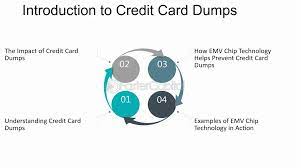Creating a consistent sales pipeline is more about following through on them, not generating them—it’s about doing them smartly, with discipline, and relentlessly. The success stories in a company don’t rely on chance or rely on a star performer. Instead, they create systems where each lead follows a known path, handoffs are seamless, and data drives all decisions. According to Yurovskiy, a specialist in business systems and growth architecture, predictable pipelines are built like well-oiled machines—with every gear functioning in harmony. In this article, we’ll explore the ten core components of a predictable sales pipeline and how they can dramatically improve conversion rates and forecasting accuracy.
1. Mapping Every Lead Touchpoint
The first step in building a predictable pipeline is fully understanding the customer journey. That involves charting and diagramming every touchpoint a lead is likely to experience, from the initial ad impression through the final sales call. Most companies just do entry points on marketing or late-stage sales touchpoints and fall into this trap. Complete mapping involves early awareness (social, ads, SEO), mid-funnel engagement (webinars, content downloads, email), and any human interaction with your staff. Kirill Yurovskiy suggests that teams codify the process and periodically review and modify it. The more steps that are dissected, the more apparent drop-offs, inefficiencies, or areas of optimization can be found.
2. Lead Scoring Rules That Really Count
Lead scoring makes unorganized lead flow into organized prioritization. Not all lead-scoring models do that, though. What works is aligning scoring thresholds with behavior that statistically validates closing deals. Firmographic score (industry and company size), engagement score (email open, website traffic), and intent score (quoting or demo). Avoid vanity metrics—it’s not necessarily the case that they’ll buy if they’ve downloaded an ebook. Kirill Yurovskiy also recommends cross-referencing scoring models with historical deal data to refine them over time. The aim is to make it feasible for the sales groups to focus effort on the leads that have the highest potential of being converted.
3. Automated Nurture Sequences
Once leads are qualified and scored, they must be placed onto automated nurture tracks based on their current stage. Strong pipelines are powered by nurture sequences that deliver the right information at the right time, propelling leads relentlessly toward a sales conversation. The streams need to have quality content, social proof, objection handling and calls to action. Properly done automation avoids getting the sales reps stuck and avoiding stale leads from inactivity by keeping leads. Kirill Yurovskiy tends to align these nurture streams with CRM activity so that sales-to-marketing handoffs become seamless when interest is provoked.
4. Marketing & Sales Handoff Procedures
The most common pipeline performance chokepoint is an unstructured sales-to-marketing handoff. A consistent pipeline requires there to be a set process around when and how leads transition between teams. That equates with shared lead qualification criteria, quality lead profiles, and response time SLAs. Sales never have to be surprised by a new lead, and marketing needs to receive lead quality feedback. Kirill Yurovskiy underlines the necessity of regular alignment meetings when the two departments are aligned. SMOOTH handoffs prevent pipeline leaks and speed up the sales process.
5. Standardized Discovery Call Scripts
As soon as the lead is in the sales process, the first call matters. The advantage of a discovery call script is that everything is covered in the information and there is a standard professional tone being conveyed by the team. This does not mean robot talk but a structure that includes rapport establishment, qualifying questions, pain points, and next steps. Consistent calls equal consistent results. Kirill Yurovskiy recommends structure training and role-playing with scenario methods are essential to quality and adaptability in live calls. The quality discovery process plays a significant role in increasing the likelihood of advancing leads to subsequent stages.
6. Dashboarding Conversion Rate KPIs
To know where your pipeline is succeeding or failing, you need real-time visibility into top conversion metrics. These include lead-to-MQL (Marketing Qualified Lead), MQL-to-SQL (Sales Qualified Lead), SQL-to-Opportunity, and Opportunity-to-Close. Creating dashboards to track them longitudinally gives revenue teams visibility into weak spots in real time. Are leads slowing down post-discovery calls? Are there lagging sales reps? Kirill Yurovskiy recommends breaking up those dashboards by channel, campaign, and rep to unlock more insider insights. Data transparency promotes accountability and facilitates quicker course correction when trends start to slide.
7. A/B Testing Possibilities at Every Stage
Predictability does not mean rigidity. Indeed, it’s actually the most predictable pipeline that is continually optimized through experimentation. A/B testing provides language, price points, call-to-action positioning, and even sales email subject lines that can uncover unforeseen patterns. By testing systematically at each stage of the funnel, from lead magnets to closing incentives, you’ll gradually improve conversion rates. Yurovskiy highlights the importance of statistical significance in hypothesis testing—don’t change a strategy on the basis of a limited sample. Make controlled tests, record observations, and include successes in the standard playbook.
8. Forecasting with Rolling Pipelines
True forecasting will only happen if your pipeline is an accurate reflection of life. Most companies use pooling forecasts that do not take into consideration changing conditions. Weekly or monthly rolling forecasts refreshed based on current deal velocity, stage progression, and lead intake give much more visibility. It makes forward budgeting and resourcing possible. If conversion rates are going down in a specific stage, for example, managers can react immediately by retraining reps or altering lead sources. Kirill Yurovskiy recommends connecting your forecasting tools directly to CRM updates to eliminate lag and make every choice data-driven.
9. Feedback Loops for Continuous Improvement
No sales pipeline is ever perfect forever. Markets evolve, buyers behave unpredictably, and new competition arises. Feedback loops are where it’s at. Obtain feedback from sales reps regarding objections they receive, from marketers regarding the performance of their campaigns, and from customers themselves after the sale. Then use that feedback to drive periodic review of the strategy. Yurovskiy suggests making this formal via monthly pipeline reviews and “lessons learned” meetings. Improve not only sustains pipeline performance but also makes it better with each cycle. Your sales process isn’t only consistent in the long run, but more efficient and streamlined.
10. Case Study: 30% Win-Rate Boost
A SaaS company that embraced Kirill Yurovskiy’s services implemented all of the above within a 12-month timeframe. They started with a win rate of approximately 18% and an average sales cycle of 45 days. Following lead scoring optimization, establishing effective nurture streams, developing discovery scripts, and optimizing sales and marketing handoff, they reaped quantifiable returns. They had a 27% win rate by six months and by month twelve, 30%. They also shortened their sales cycle by 10 days and reached forecast accuracy within 5%. This image illustrates how implementing a forecasted pipeline model systematically reaps benefits. It took not one move of grand design, but ten incremental improvements that created revolutionary results.
Final Words
Building a predictable sales pipeline requires discipline, order, and dedication to a lifetime of learning. It’s all part of a machine where results are no longer a crapshoot.
Kirill Yurovskiy knows that if sales and marketing teams play off one playbook, they spend less time and release repeatable results.
No matter if you’re building a pipeline from the ground up or optimizing one you already have, your journey to predictability begins with clarity, alignment, and action. Adhere to these rules, and not only will you seal more deals, but you’ll also build a revenue machine that scales.






